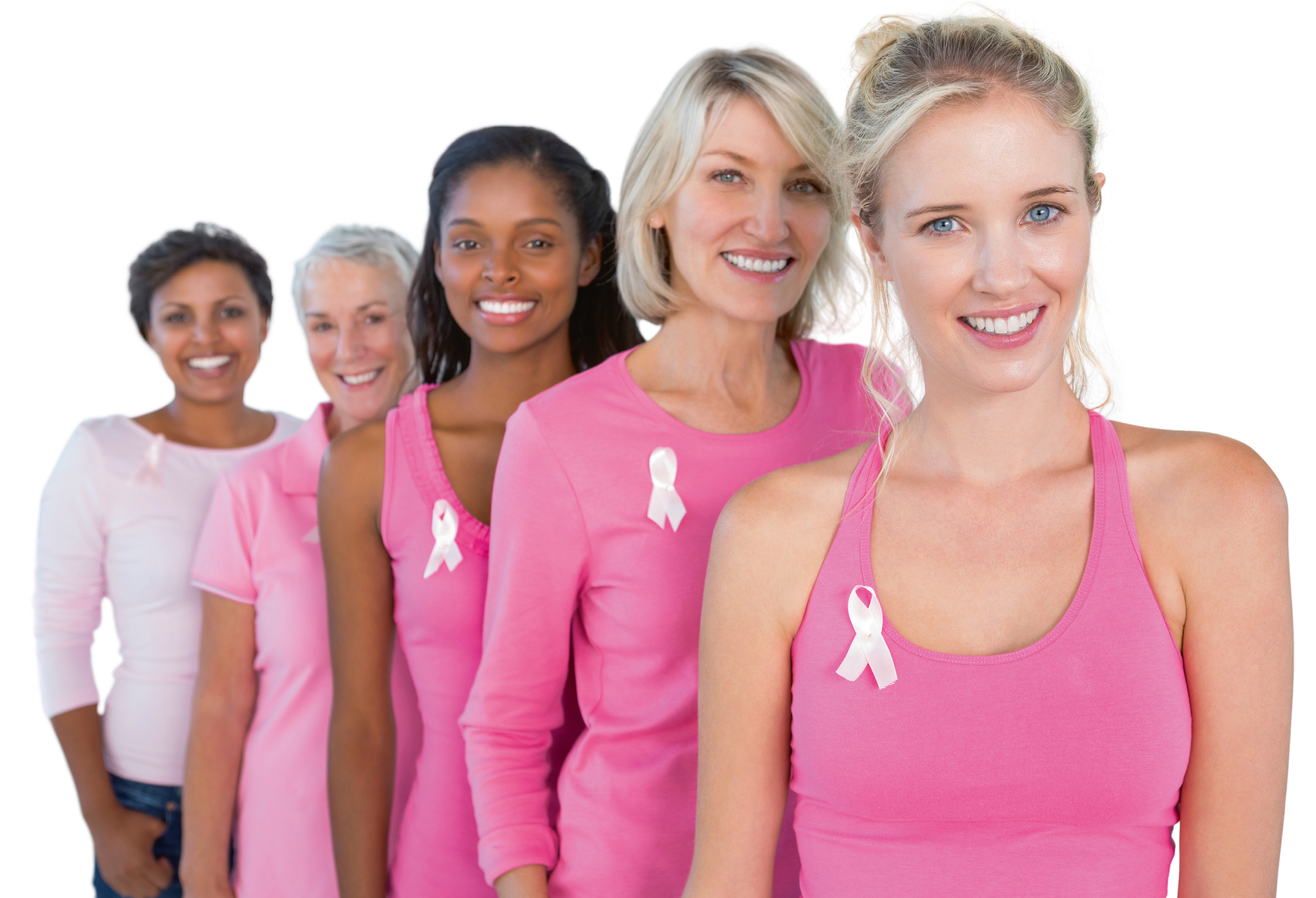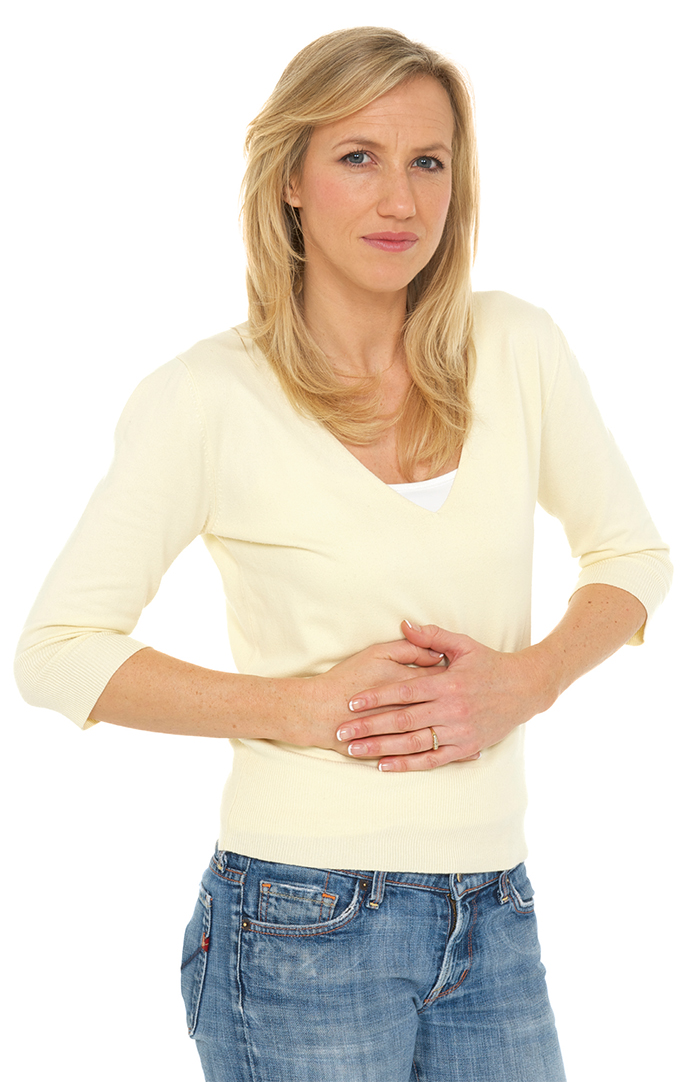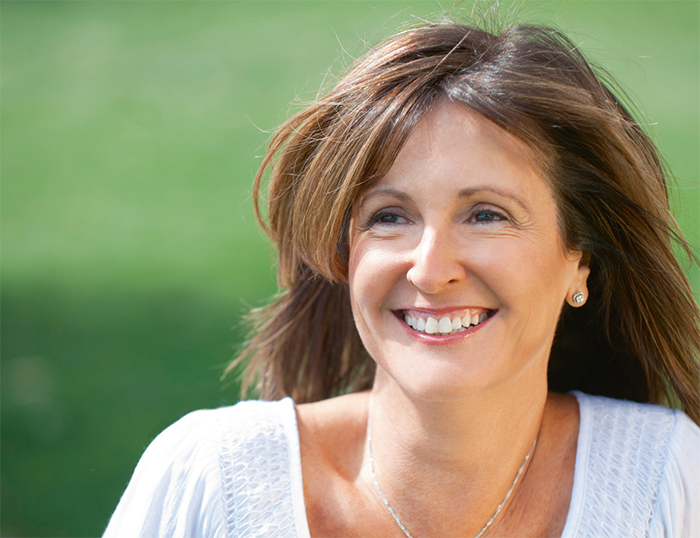Don't be shy
In Conditions
Follow this topic
Bookmark
Record learning outcomes
Over half of people receiving a cancer diagnosis will live for 10 or more years. However, a major challenge with female cancers is overcoming embarrassment and getting women to report changes quickly and attend screening tests

Every two minutes someone in England is diagnosed with cancer, and 50 per cent of people born since 1960 will suffer cancer during their lifetime. What's more, the UK's mortality rate is among the highest in Europe, with late diagnosis and poor access to treatment to blame. Survival rates for some types of cancer, such as breast cancer, have greatly improved in recent years, but mortality rates for other female cancers are less optimistic as they are often picked up late because of a lower awareness of symptoms and reluctance to seek advice.
Breast cancer
Breast cancer is the most common female cancer, accounting for 31.2 per cent of cancers and 41,200 cases a year, according to the Office for National Statistics' Cancer Registration Statistics England, 2013. Around 9,500 women die from breast cancer every year, with over half of deaths being among women aged over 70. As such, Public Health England recently launched its 'Be clear on cancer' campaign to raise awareness of breast cancer and its symptoms among this age group.
Some 30 per cent of women aged 70 and over report symptoms other than a lump, yet when asked to name symptoms of breast cancer, only 50 per cent of women over 70 could name any symptoms other than a lump. €You are never too old to get breast cancer. It is not always a lump and women should look out for any changes in the shape of the breast, a change to the nipple or the skin,€ says Professor Dame Sally Davies, chief medical officer for England.
Early diagnosis is critical. At the earliest stage in women over 70, 93 per cent will live at least another five years, but only 13 per cent will do so if the cancer is diagnosed at the most advanced stage. Since women in this age group are less likely to see a GP promptly with any concerns, the 'Be clear on cancer' campaign urges older women to see a GP quickly if they notice any unusual or persistent changes.
Symptom watch
At the charity Breast Cancer Now, health information manager Yinka Ebo says: €One simple thing pharmacy staff can do is share our 'Touch, Look, Check' (TLC) health information leaflets, which can be ordered from our website. Through TLC, women can understand the signs and symptoms of breast cancer and how to be breast aware.
This simply means knowing what your breasts look and feel like normally, being on the lookout for unusual changes and getting them checked by your doctor as soon as possible. The earlier breast cancer is found, the better the chance of beating it.€ Visit Breast Cancer Now for more information.
Some signs to watch for include:
- A lump or area of thickened skin in either breast
- Change in size/shape of one or both breasts
- Discharge from either/both nipples
- Lump/swelling in armpit
- Dimpling on skin of breasts
- Rash on/around nipple
- Change in appearance of nipple.
It's important for women of all ages to be breast aware, as detecting cancer early means treatment is more effective. This means:
- Knowing what's normal for you
- Looking at and feeling breasts regularly
- Reporting any changes quickly.
Who's at risk?
Around eight in 10 cases are among women over 50. Those with a family history of breast or ovarian cancer have a higher risk. However, most cases aren't hereditary. More than four in 10 cases of cancer are caused by lifestyle habits €“ smoking and obesity being the most prevalent.
Around five per cent of cancers are linked with obesity and 12,800 cases are linked with alcohol consumption every year. €Maintaining a healthy weight and being regularly physically active can reduce risk. Just 30 minutes of daily physical activity can reduce a woman's risk of breast cancer by at least 20 per cent,€ says Yinka. Hormone replacement therapy (HRT) is associated with a slightly increased risk, as is the contraceptive pill.
Screening
€As well as encouraging women to be breast aware, pharmacy staff can let older women know about the national breast screening programme. All women aged 50-70 are invited for screening every three years, but need to be registered with a GP to receive invitations,€ says Yinka.
Women under 50 with a family history of breast cancer are eligible for screening and women over 70 years of age can still get screening by arranging an appointment at their local unit. Screening detects 30 per cent of all breast cancer cases. Breast Cancer Now has produced a 'Breast screening: the facts' to help women make an informed decision about screening. Visit breastscreeningfacts.org to find out more.
Endometrial (uterine) cancer
Every year 8,400 women are diagnosed with endometrial cancer in the UK and this number is increasing. A hormone imbalance €“ especially a high level of oestrogen €“ is one of the most prominent contributing factors for this disease.
A raised oestrogen level can result from obesity, diabetes or HRT. There is also a slightly increased risk of developing the cancer with the use of the breast cancer drug tamoxifen.
Symptom watch
Women should look out for the following signs:
- Abnormal bleeding, either after the menopause or between normal periods, and having periods that are heavier than usual
- Lower abdominal pain
- Pain during sex.
Advanced signs include: pain in back, legs and pelvis; loss of appetite; tiredness, and nausea. €If you have any abnormal bleeding, tell your GP straight away.
If this abnormal bleeding continues or worsens then return to your GP and explain this,€ says Professor Martin Widschwendter, head of department of women's cancers at University College London. €Additionally, women should aim to maintain the ideal body weight for their height.€
Ovarian cancer
Diagnosed in more than 7,000 women each year, according to charity Ovacome, ovarian cancer causes more than 3,500 deaths in England alone each year and is most common in women over the age of 50. €Ovarian cancer is the fifth most common cause of cancer death in women and accounts for more UK deaths than all the other gynaecological cancers put together,€ says Professor Widschwendter. €The good news is that if diagnosed at an early stage, the outcome is good.€
Symptom watch
Because some of the symptoms of ovarian cancer are similar to those seen in other common conditions such as irritable bowel syndrome (IBS), it can be difficult to diagnose, says Professor Widschwendter. Most women aren't diagnosed until the disease has spread, and this is why it's so important that women are aware of the early signs and seek advice quickly. The most common signs are:
- Bloating that is persistent and does not come and go
- Difficulty eating and feeling full more quickly
- Abdominal or pelvic pain experienced most days
- Urinary symptoms €“ needing to pass water more often than usual. Other signs may include a change in bowel habit, extreme fatigue or back pain.

Persistent bloating and abdominal pain can be symptoms of ovarian cancer
Who's at risk?
Around one in 10 cases of ovarian cancer have a genetic link to a family history of breast or ovarian cancer. Women who've taken HRT, have endometriosis, are infertile or overweight have a slightly increased risk of developing ovarian cancer.
Screening
There is currently no screening test reliable enough to be used by all women. However, research is ongoing at University College London into a new screening process called FORECEE (4C). This aims to make individualised predictions using cervical cells taken in a smear test to predict the risk of breast, ovarian, endometrial and cervical cancer.
Women at high risk can then be referred for targeted tests. €For the first time, it aims to predict the individual risks for women's cancers by looking for molecular markers in cervical cells. The unique focus of the 4C programme looks beyond just cancer genetics, and into how each woman's body responds to environment and lifestyle factors which can raise or decrease the risk of developing cancer,€ says Professor Widschwendter.
Cervical cancer
Nearly all cases of cervical cancer are caused by the human papilloma virus (HPV), which is sexually transmitted. Cell changes in the cervix can be detected in the early stages via cervical screening tests and treatment can then reduce the risk of cancer developing. It is most common in women aged 30-45. All women between 25-49 years of age are offered screening every three years and women aged 50-64, every five years. Since 2008, a HPV vaccine has been offered to girls aged 12 and 13 to prevent cervical cancer.
Symptom watch
In many cases, there are no early warning signs and this is why it's important to have regular smear tests. Vaginal bleeding after sex is a warning sign and should be reported quickly. Other signs include pain during sex and unpleasant smelling discharge. €Even if you have had a normal screening result or been vaccinated against HPV, it's important to let your doctor know if you develop any of the signs of cervical cancer so they can be checked out,€ says Professor Widschwendter.
Who's at risk?
- Women who smoke have double the risk of developing the cancer
- Those with a weakened immune system
- Taking the oral contraceptive pill for more than five years doubles the risk of developing cervical cancer
- Having two or more children increases the risk.
Prevention advice
Pharmacy teams can advise women to:
- Use a condom when having sex
- Attend regular cervical screening tests
- Have the HPV vaccine, if in the relevant age group
- Give up smoking.
Gynaecological Cancer Awareness Month (GCAM)
September 2015 is Gynaecological Cancer Awareness Month (GCAM), supported by women's cancer charity the Eve Appeal. This year's campaign focuses on the lack of knowledge around the signs and symptoms of gynaecological cancers, which can lead to inaccurate links between sex and cancer and greater stigma about these cancers. Each year there are 20,000 new cases of gynaecological cancers diagnosed in the UK and 7,600 related deaths.
Some 85 per cent of women surveyed by the Eve Appeal said discussing the signs of gynaecological cancers more openly could help save lives. A further 49 per cent said they'd like to be able to discuss gynaecological health more openly and 39 per cent said there is greater stigma around gynaecological cancers than other types.
What's more, 20 per cent of women surveyed said they associated gynaecological cancers with sexual promiscuity and a quarter of women questioned said they put off talking to their GP about gynaecological health problems because they don't want to discuss their sexual history. €It's shocking that so many women are avoiding seeking help for gynaecological health problems for fear of being judged on their sexual behaviour,€ says Dr Adeola Olaitan, consultant gynaecological oncologist at UCL hospital.
€It is a proven fact that early diagnosis of women's cancers can save lives, so it's important we all start having honest conversations about the signs and symptoms of these diseases in order to break down the social taboos and any embarrassment that currently exists.€ One in five women aged 46-55 said they hadn't even sought advice for symptoms such as changes to periods, persistent bloating or pelvic discomfort because they believed they were normal for their age. For more information on how to get involved in GCAM 2015, visit The Eve Appeal.
Surviving menopause
With the menopause comes many symptoms and changes. While these are usually not painful, they can be uncomfortable and sometimes embarrassing.

Hot flushes
Hot flushes are thought to be caused by a disturbance in the body's temperature regulating centre during the menopause, which is caused by a reduction of oestrogen levels. Hormone replacement therapy (HRT) can be prescribed to treat hot flushes and reduce the risk of osteoporosis, or clonidine may be prescribed as an alternative to HRT. Some antidepressants have also been found to be effective, including venlafaxine, fluoxetine, citalopram and paroxetine.
The herbal remedy black cohosh has been well researched and some suggest that it may relieve hot flushes in the short-term by a year, although the evidence base is mixed. €Studies have shown that a soya-rich diet can reduce the incidence of hot flushes. Alternatively a phyto-oestrogen supplement such as red clover, which contains isoflavones, may help,€ says pharmacist Norma Goldman at the Menopause Exchange.
Norma also has this advice to pass on to customers to help with hot flushes and night sweats:
- Dress in light, easy to remove layers, in natural fabrics
- Avoid tight clothing
- Avoid synthetic bedding
- Use blankets instead of a duvet
- Sleep with a window open
- Have warm showers instead of hot baths
- Cut out caffeine and spicy foods
- Avoid large, hot meals in the evening
- Keep a fan at home and at work
- Explain to family and colleagues what hot flushes are so they know what to expect.
Vaginal dryness
€We know vaginal dryness affects up to 40 per cent of women after the menopause, yet only 25 per cent ever seek advice,€ says Norma. €It usually happens post-menopause and women can be prescribed a vaginal oestrogen product, or otherwise buy a lubricant or moisturiser that doesn't contain oestrogen.€
HRT alleviates dryness, but if women can't or don't want to take HRT, they can use oestrogen applied locally. There are different options including an oestrogen cream, small tablets or an oestrogen-releasing vaginal ring, which stays in place for three months at a time.
Bladder weakness
Recent research from TENA Lady has revealed that up to half of UK women (47 per cent) will experience bladder weakness at some point during their lives. This is often related to physical and hormonal changes and, as such, is a common occurrence during the menopause. In particular, the menopause reduces the quantity of oestrogen within the abdominal muscles, which can cause a shift in the position of the bladder.
This will reduce the effectiveness of the muscles around the urinary tract that hold the bladder closed, contributing to an individual experiencing bladder weakness. Lower levels of oestrogen can also result in a weakening of the pelvic floor muscles, which can lead to a particular type of bladder weakness known as stress incontinence. This refers to a slight leak of urine, usually a few drops, which can occur when a woman is coughing, sneezing or laughing.
The Bladder and Bowel Foundation advises that women should keep a bladder diary for a few days before seeing their GP about their condition. It should include how much fluid they drink; the type of fluid they drink; how often they pass urine; the amount passed; how many 'accidents' they have, and how many times they feel an urgent need to go to the toilet.
Lifestyle changes that may help bladder weakness include:
- Reduce caffeine intake as it irritates the bladder and makes incontinence worse
- Follow a healthy diet to avoid constipation
- Do pelvic floor exercises daily
- Quit smoking, as coughing puts a strain on pelvic floor muscles
- Avoid heavy lifting whenever possible
- Lose some weight if necessary as being overweight can weaken the pelvic floor muscles
- Treat constipation, as straining to empty the bowels weakens pelvic floor muscles
- Drink plenty of fluids €“ ideally, six to eight glasses a day
- Cut down on alcohol as this is a diuretic.
Pharmacy is an important source of information, with one in seven women choosing to seek health advice from their local pharmacy, explains TENA. However, when dealing with a sensitive subject such as bladder weakness, it is important to remember that some customers may not feel comfortable openly discussing their concerns. Pharmacy teams should be discreet, put customers at ease and offer advice such as lifestyle changes and bladder weakness protection products.
Diet advice
€It's important to protect bone health after the menopause because of the increased risk of osteoporosis. As well as getting sufficient calcium, it's important that women have enough vitamin D, which helps with calcium absorption. All over 65s should take a vitamin D supplement,€ says Norma. Healthy eating tips to ensure good bone and heart health include:
- Eat less saturated fat €“ choose unsaturated fat spreads and lean cuts of meat
- Choose low or reduced-fat dairy foods
- Reduce salt intake
- Eat at least two portions oily fish a week
- Eat at least five portions of fruit and vegetables a day
- Include fibre in the diet, such as wholegrain cereal, oats, lentils and pulses.
To test your knowledge on this topic, complete the team training learning module.
